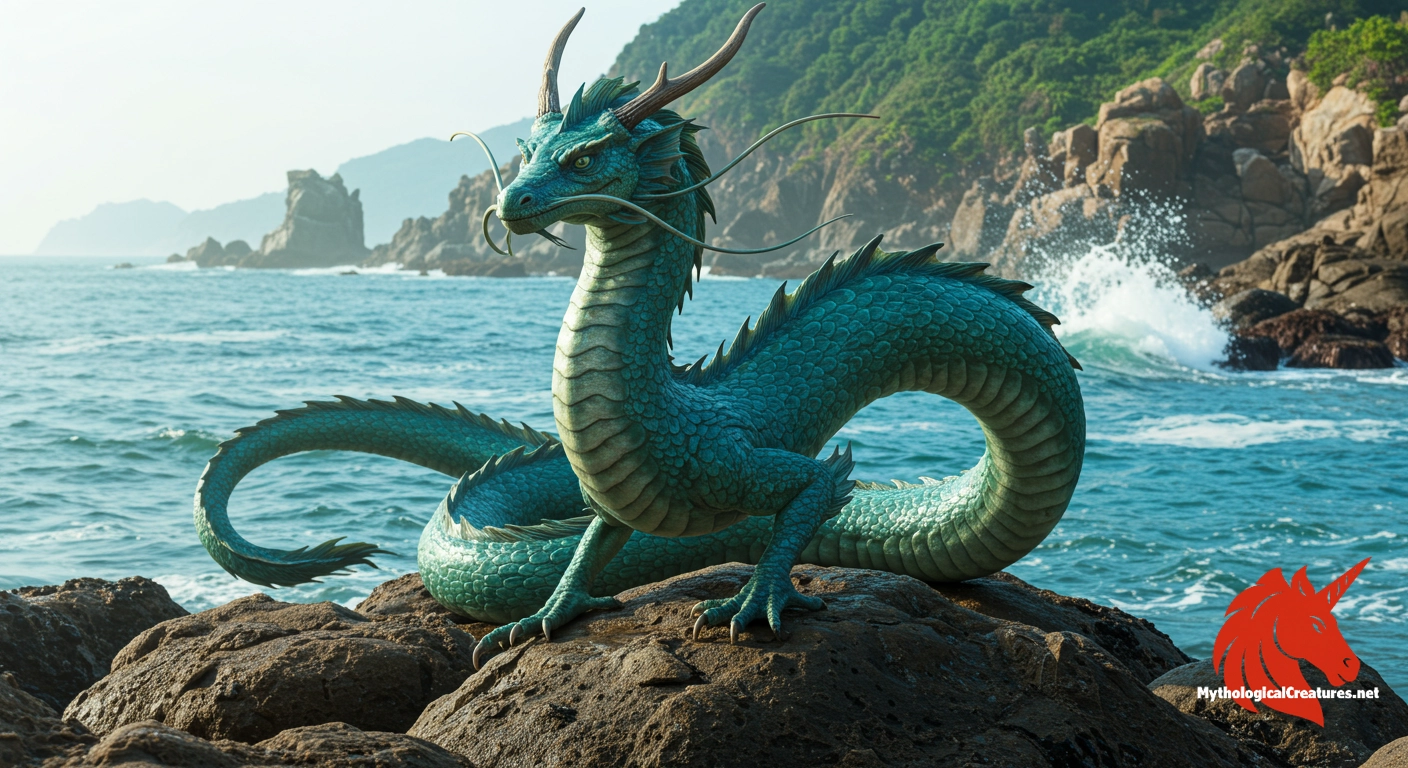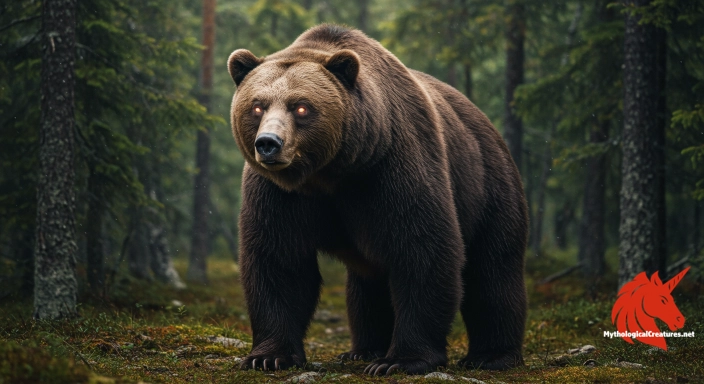Ao Guang: Ao Guang is the Dragon King of the East Sea in Chinese folklore, ruling over the Eastern ocean with majesty and authority.

Ao Guang
Ao Guang - Embodies the majesty and power of the Eastern Sea and its natural phenomena
Origins & First Encounters
Ao Guang stands as one of the most striking figures in Chinese mythology, famously recognised as the Dragon King of the East Sea. His legend weaves together themes of divine authority and natural mystique, reflecting the ancient Chinese reverence for water as a source of life and power. His early appearances in classical literature reveal a character both formidable and enigmatic, whose origins intertwine myth and nature. The chronicles of his exploits place him at the heart of celestial politics, where his rulership over the vast East Sea symbolises man’s struggle with the forces of nature. This enduring image highlights the cultural significance of dragons as embodiments of both benevolence and tempestuous might.
Historical retellings present a deity shaped by the interplay of natural phenomena and human aspiration, offering insights into the cosmological views of early Chinese civilisation. Tales of his dominion extend beyond myth into the realm of allegory, where the sea itself becomes a metaphor for life’s uncertainty and grandeur. His legendary status is deeply interlaced with regional customs and seasonal rituals, underscoring the importance of water in traditional belief systems. Ao Guang’s story has traversed centuries, transforming from oral tradition into a rich tapestry celebrated in various art forms. His myth continues to resonate, serving as a bridge between the ancient past and the evolving cultural identity of China.
Source Texts & Tale Variants
Ancient texts such as Fengshen Yanyi and Journey to the West provide some of the earliest literary depictions of Ao Guang, showcasing his complexity through vivid narrative lenses. The classical sources depict him not merely as a ruler of the East Sea, but also as a pivotal character interacting with a vast array of gods, heroes, and mortals. Each account adds layers to his character by blending divine attributes with episodes of human-like error and emotion. Stories passed down through local oral traditions further embellish these accounts with regional colour and detail. Such narrative diversity offers a multifaceted view of his character that has evolved over generations.
Regional folklore and poetic anthologies have contributed additional variants that speak to his temperamental nature and his role in natural phenomena. In some retellings, his wrath brings torrential rains and stormy seas, while other versions underscore his protective qualities in safeguarding coastal communities. These varied sources collectively illustrate a dynamic mythos where legends intersect with historical events and cultural practices. The multiplicity of his story variants provides a fascinating insight into how myth adapts to the changing needs and imaginations of society. Together, these texts and tales form a comprehensive mosaic of a deity whose legend transcends singular narrative interpretations.
Form & Powers
Artistic portrayals of Ao Guang depict him with the classic sinuous form of a Chinese dragon, his elongated body shimmering with undulating scales that echo the ever-changing hues of the ocean. His eyes, deep and luminous, reflect not only the mystery of the deep waters but also the wisdom attributed to ancient deities. Intricate horns crown his head in gracefully curved spirals, each twist symbolising both royal authority and celestial power. The dragon’s form is marked by a harmonious blend of strength and elegance, where muscular contours meet delicate, cloud-like whiskers. This visual depiction captures an essence that is both majestic and formidable, embodying the dual nature of beauty and terror inherent in the sea.
The traditional imagery further reveals a creature adorned in a vibrant palette of blues and greens, interspersed with flashes of gold and red that underscore his regality. Detailed representations often highlight the artistry behind the scales, each one etched with subtle designs that hint at ancient lore. His body, though serpentine and fluid, exudes a tangible robustness that enables him to command the vast waters. The graceful flow of his mane and beard is rendered with a poetic sense of motion, reinforcing his connection to the fluidity of nature. This detailed physical portrayal not only captures his mythic splendour but also serves as a perennial symbol of elemental power and divine beauty.
Regional Faces
Across China, regional adaptations of Ao Guang’s myth highlight a spectrum of interpretations that reflect local cultural and environmental influences. In coastal regions, tales tend to accentuate his benevolence, portraying him as a guardian who blesses fishermen and ensures the bounty of the seas. Inland narratives, on the other hand, sometimes cast him in a stricter light, where his control over water is seen as both a life-giving and potentially destructive force. Local festivals and ceremonies often integrate his image, adapting the ancient myth to celebrate community resilience against natural extremes. These diverse portrayals serve to localise his character, making him an integral part of regional identity and tradition.
Variations in visual depiction are also apparent, as artists in different provinces incorporate unique motifs and colours into his image. In the south, his form is sometimes adorned with additional ornamental detail that reflects the local aesthetic of vibrancy and fluidity. Northern adaptations may downplay the more ornamental aspects, emphasising instead his austere and commanding presence. Such regional retellings underscore the versatility and adaptability of his myth, ensuring that his legacy remains relevant regardless of geographical or cultural differences. The regional adaptations of Ao Guang’s legend not only enrich his character but also mirror the deep connection that local communities share with the powerful forces of nature.
Cultural Parallels
Comparative mythology positions Ao Guang alongside other revered deities who govern the natural elements, inviting a cross-cultural dialogue about the nature of power and the divine. His role as the sovereign of the East Sea naturally draws parallels with Western figures like Poseidon, though his narrative steeply reflects the philosophies found in East Asian thought. Similar to other dragon gods across Asia, Ao Guang embodies the intricate balance between benevolence and ferocity, a common motif in water-related deities. The cultural emphasis on harmony and balance in Chinese tradition sets his myth apart, offering a distinctive blend of authority and compassion. His status as a water deity also resonates with various indigenous mythologies, which acknowledge the life-sustaining as well as the destructive qualities of water.
Further comparisons reveal that like many mythical rulers, his character is a repository for societal ideals and environmental phenomena. In Japan and Korea, for example, counterparts to Ao Guang appear with localised features that adapt the broader theme of elemental control to fit regional narratives. The interplay between human society and the unpredictable forces of nature is a universal theme, with Ao Guang representing a culturally specific take on this dynamic. His myth is a rich example of how differing cultural traditions can interpret similar natural phenomena in unique yet overlapping ways. Such comparative analysis not only highlights the distinctiveness of Ao Guang’s myth but also underlines the universal human quest to understand and personify nature’s power.
Legacy & Modern Evolution
Over time, Ao Guang has transitioned from a figure confined to ancient scrolls into a vibrant symbol of natural might and cultural endurance. His myth has been continually reinterpreted to meet the shifting tides of societal values and artistic expression. Modern literature, film, and even digital media frequently draw upon his storied past to evoke themes of environmental stewardship and the inexorable power of nature. The evolution of his depiction reflects a broader trend in mythology, where ancient symbols are revitalised to address contemporary concerns and dreams. His narrative, rich in allegory and symbolism, remains a timeless reminder of the balance between human civilisation and the natural world.
In popular culture, Ao Guang is often celebrated as both a fearsome adversary and a benevolent protector, a duality that continues to intrigue and inspire. Contemporary portrayals blend traditional elements with innovative storytelling, creating fresh interpretations that resonate with modern audiences. His image is reinvented in art exhibitions, theatrical presentations, and even virtual reality experiences, each medium contributing new layers to his legend. By bridging ancient myth and modern context, Ao Guang has become an enduring emblem of resilience and transformation. His legacy, firmly rooted in the annals of mythology and thriving in today’s cultural landscape, continues to captivate diverse audiences with its rich tapestry of meaning.
Interesting Fact
Unlike many Western dragons, Ao Guang and his kin epitomize a harmonious balance between nature and divinity, reflecting a unique cultural perspective in Chinese mythology.
Quick Creature Info
Associations:
Our Mythic Legendary Rating:

Also Sometimes Known As:
Habitat:
Supernatural Powers:
Physical Attributes:
Abilities:
Behavior:
Lore:
Related Creatures, Tales or Lore
- AAo Qin
- FFafnir
- YY Ddraig Goch
References
Discover Another Mythical Legend You May Not Have Heard Of?
Uncover the mysteries of ancient folklore and expand your knowledge of legendary beings from cultures around the world.
Dare to Meet the Lieaibolmmai....
Mythical Disclaimer: The images and data on this site are derived from various historical and literary sources, but we have found that many myths often have multiple versions and interpretations across references, sometimes contradictory. As a result, these creature depictions are artistic interpretations—imaginative blends of folklore, legend, and a dash of AI guesswork. Because creature descriptions vary widely, our illustrations and accompanying information represent our best effort to honor mythology while bridging creative gaps. Enjoy these interpretations—just remember, we've done our best to respect the stories and validate available data, but in the realm of mythology, details often shift, imagination leads the way, and nothing is ever set in stone!
Curated by the Mythological Creatures Team (rev. May 2025)
